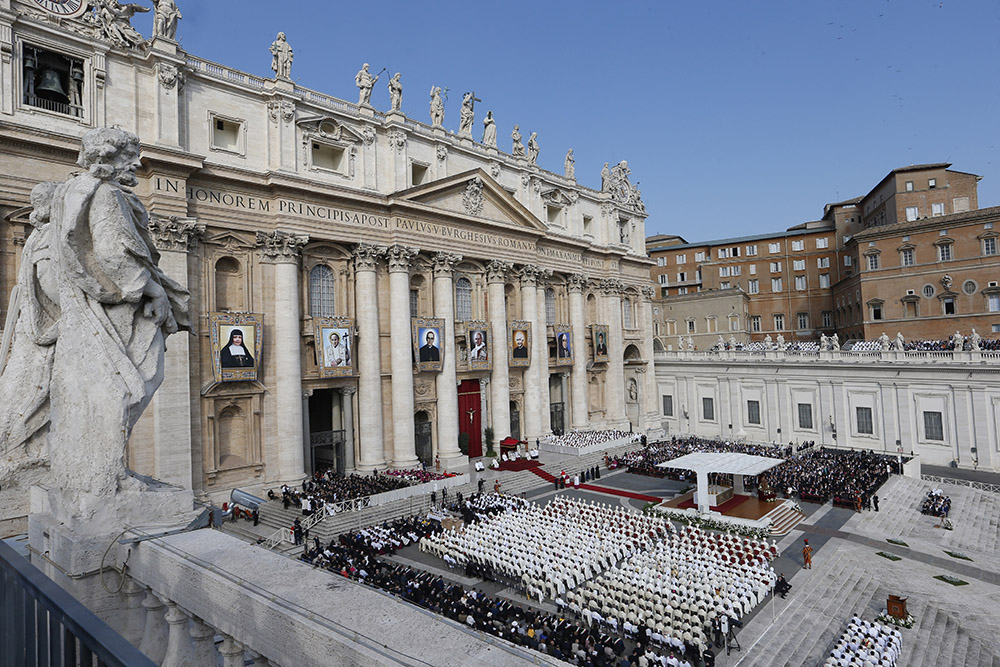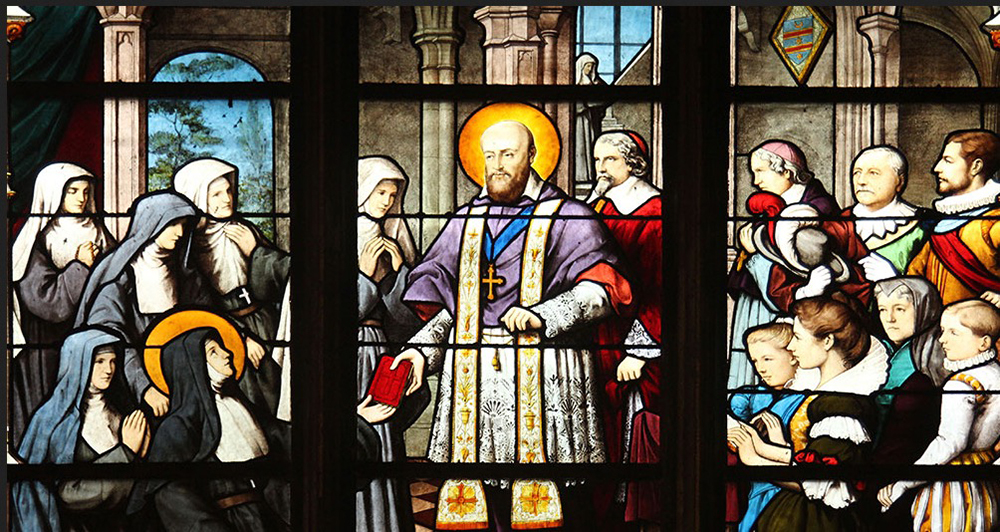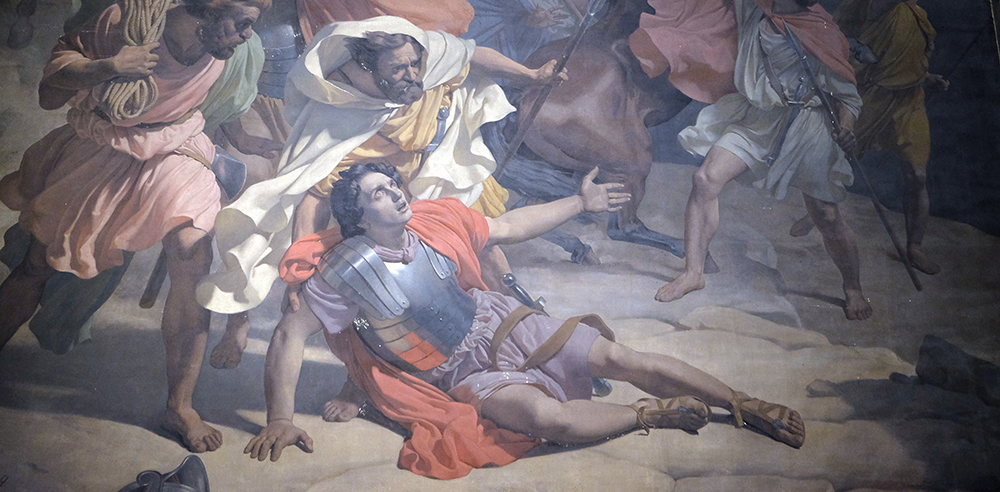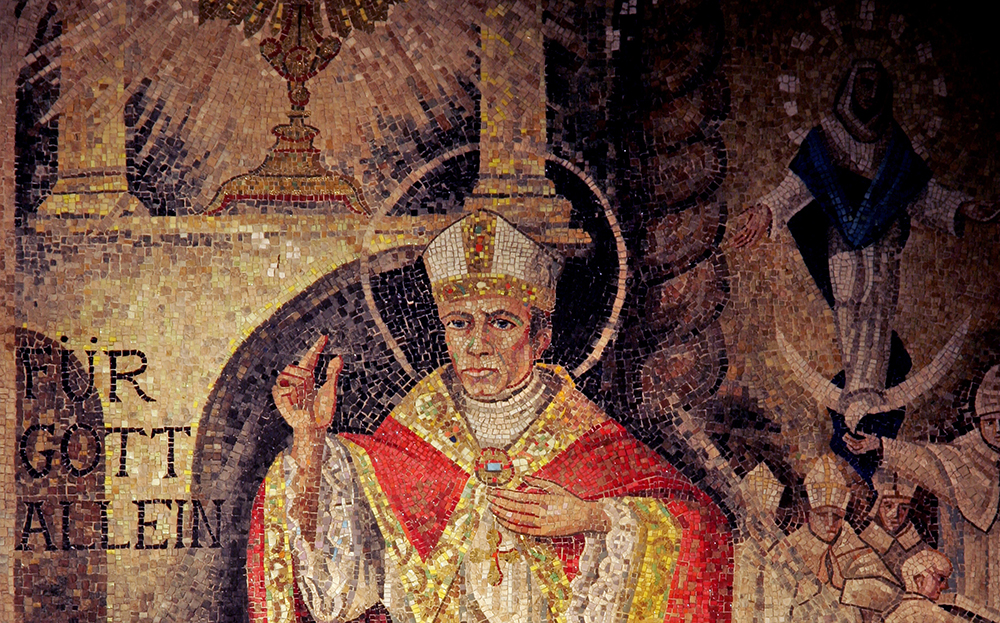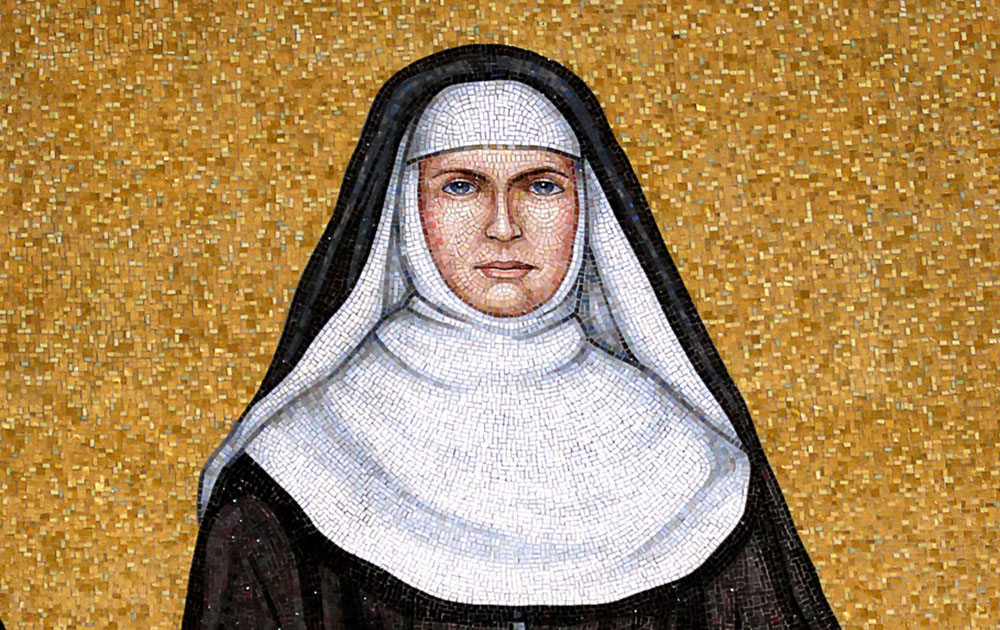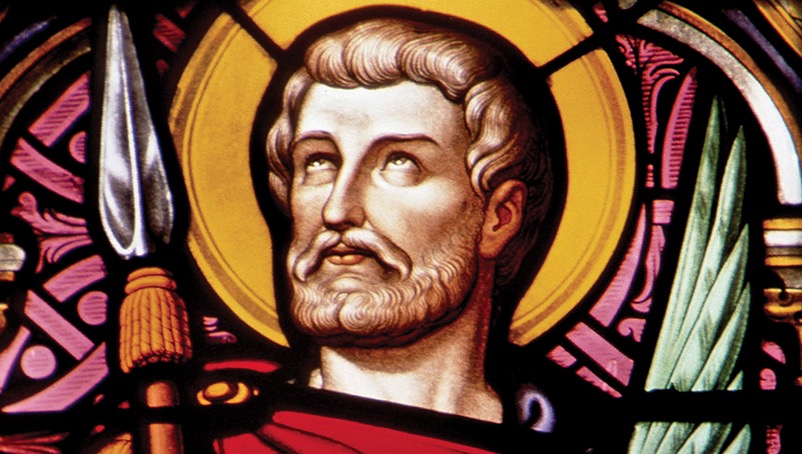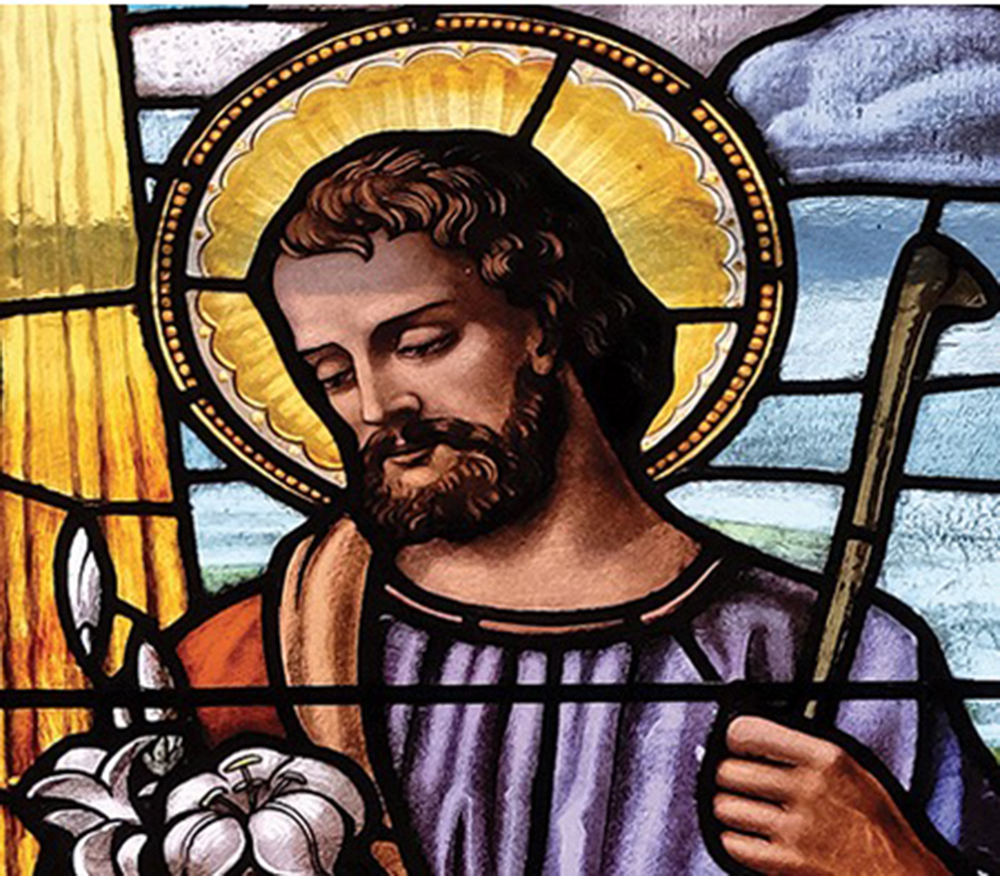It would not be atypical in contemporary parlance to describe a significant friend or other person we know as a “living saint.”
What do we mean when calling one a “saint” and how that person is so recognized by the Church? Catholicism’s 2,000-year history has seen the process for the proclamation of saints develop significantly. Religious historian and journalist Kenneth Woodward, quoting a popular history of the Vatican in his book “Making Saints: How the Catholic Church Determines Who Becomes a Saint, Who Doesn’t, and Why” (Touchstone), commented on the mysterious nature of the canonization process: “The mystery of Sainthood and the canonization process, with all its spiritual dimensions of divine intercession, relics and miracles, probably is the Church’s greatest enigma outside the Mass itself.”
Canonization in the Early Years
The concept of honoring Christian men and women and developing cults to their memory started as a direct result of the Roman persecutions perpetrated on the early followers of Jesus. Public veneration of many of these martyrs, generally celebrated on the date of their death, was in evidence as early as the second century. While Christians regarded all the baptized as saints, dying for the faith was particularly noteworthy and was awarded with special veneration. Sanctity and martyrdom were virtually indistinguishable in the Christian consciousness. As Jesus died obedient to the Father, so the saints died for and in obedience to Christ.
Cults to individual saints, almost exclusively local in nature, arose. In this era there were generally no inquiries, tribunals or judgments concerning saints; rather the martyrs were denoted as saints by public acclamation. This was a period of popular canonization, when spontaneous reputation for sanctity could lead to sainthood.
The medieval period of Church history saw a significant centralization of the procedures for declaring martyrs and men and women of heroic virtues as saints. Greater control was deemed necessary in order to eliminate local abuses and move toward some universal standards. Centralization of the canonization process led to greater hierarchical control and, consequently, a more formalized process. The basic procedure began when a cult arose from the people. This was based not only on miracles but holiness of life. The greater the authority of the Church official who performed the rights of elevatio and translatio, the more God was glorified and the more the saint was recognized. This was the initial reason why bishops often requested intervention of the pope to formally proclaim one a saint. In turn, papal confirmation accentuated the pope’s authority.
The shift to a more centralized canonization process brought a consequent change in the types of individuals who were canonized. Members of religious orders and royal houses in favor with a particular pope were given priority. Most notably was the obvious diminution of martyrdom as the litmus test for sainthood. Servants of God who combined radical poverty, chastity and obedience, such as Francis of Assisi (canonized only two years after his death), were favored. The learned cleric, such as St. Dominic, canonized in 1234, and Thomas Aquinas, canonized in 1323, was another favored category.
The centralization of the canonization process continued apace throughout the 17th and 18th centuries. During the pontificate of Pope Urban VIII (1623-44) the papacy gained complete control over the declaration of saints. One of Pope Urban’s decrees forbade any form of public veneration, including the publication of books of miracles or revelations attributed to a supposed saint, until the person was beatified or canonized by solemn papal declaration. His one exception was if a cult had existed “from time immemorial” or could be justified on the strength of what the Fathers or saints had written about the individual.
Reforms and Codification
Beginning with the publication of the Code of Canon Law in 1917, the canonization process became codified. Specifically, 143 canons that dealt with beatification and canonization were present in the 1917 code. The aforementioned means to centralize the canonization process was made even more formal through codification. Canonization became known as an act by the Supreme Pontiff to declare in a definitive and solemn way that a Catholic Christian was actually in the glory of heaven, interceding for humanity before God. The two categories of martyrdom and heroic virtue, however, did continue to be the avenues one could traverse to be declared a saint.
The procedures defined by the 1917 Code of Canon Law were utilized until Pope Paul VI modified them in March 1969. In his motu proprio, Sanctitas clarior, the pope simplified the norms for beatification. Instead of repeating the informative process on both episcopal and Roman levels, the pope called for the diocesan bishop to initiate the process once it received approval of the Holy See.
Similarly, there was to be only one process to investigate the Servant of God’s writings, life of virtue or martyrdom and absence of a public cult. The bishop was also allowed to investigate purported miracles once he had received instructions from the Sacred Congregation of Rites on how to proceed. These changes greatly simplified the process.
While the canonization process has seen significant development over time, the work of Pope St. John Paul II (r. 1978-2005) produced not only the most beatified and canonized individuals of any pope in history, but also appropriately was the source of the most recent transformation (streamlining) of the canonization process.
In 1983, a wholly revised and simplified system for the canonization of saints was inaugurated. That year an updated Code of Canon Law was promulgated with only one canon (1403) dealing directly with the process of beatification and canonization. The major change came on Jan. 25, 1983, when Pope St. John Paul issued the apostolic constitution Divinus Perfectionis Magister.
While continuity of purpose was maintained, the pope’s 1983 constitution mandated a thorough reform of the entire canonization process inaugurated by Pope Urban VIII in the 17th century and codified in 1917. The goals of this reform were to make the canonization process simpler, faster, less expensive, more collegial and, ultimately, more productive.
The changes were manifested in two fundamental ways: (1) The entire responsibility for gathering evidence in support of the cause was placed in the hands of the local bishop. Instead of two canonical processes, episcopal and the Roman, there would be one, directed by the local bishop. (2) Divinus Perfectionis Magister abolished the entire series of legal dialectics between the postulator and the Promoter of the Faith. A new group of officials, “the college of relators,” supervised the writing of the historical-critical account of the candidate’s life and virtues. The chief sources of information for those reviewing the Servant of God’s cause would be historical, especially a well-documented critical biography. Additionally, the pope said that an updated process was needed as the bishops had asked for a simpler procedure while maintaining “the soundness of the investigation in matters of such great import.”
Divinus Perfectionis Magister created a paradigm shift in how saints were declared. No longer did the process use a courtroom model for determining a truth concerning the saint’s life, but rather it employed the academic model of research and writing. Replacement of the postulator and Promoter of the Faith with the college of relators was arguably the most significant change, because it transformed the process from a trial to an investigation. The criteria for initiation of a cause were also modified. First, the 50-year waiting period was reduced to five years, although even this could be waived by the pope for pastoral reasons. Additionally, the cause was not to be introduced unless there existed a true and widespread acclamation — namely, spontaneous, genuine and broadly held — among the faithful that one was in heaven either through an active martyrdom or because of living life in a heroic manner over and above the actions of upright men and women.
The Modern Process
Today, as a result of St. John Paul’s changes, the process of canonization proceeds in three phases. It begins with the institution of a diocesan inquiry, which consists of a series of investigations initiated by a competent diocesan bishop who wishes to raise a cause of canonization. This inquiry has as its goal the collection of information concerning the life, heroic virtue, reputation of sanctity or martyrdom of the Servant of God, as well as proof of any possible miracles. Second, after the information has been collected, it is sent to the Congregation for the Causes of the Saints, presided over by a cardinal prefect, which conducts a study of the case, concluding with the preparation of the positio. Last, the Congregation for the Causes of the Saints discusses and passes judgment on the merits of the cause leading, with the approval of the pope, to beatification or canonization.
In May 2007, Pope Benedict XVI issued Sanctorum Mater (Instruction for Conducting Diocesan or Eparchial Inquiries in the Causes of Saints), which clarified the rationale for canonization. Heroic virtue, reputation for holiness and martyrdom were the three principle criteria for investigation of a cause.
The document also provides greater clarity on the role and duties of the postulator, stating that he or she should be an expert in theology, canon law and history, as well as understanding the work of the Congregation for the Causes of the Saints.
Historical Significance
The celebration of those recognized as saints is an integral part of the Church’s liturgical life. Throughout the liturgical year, a journey that begins with the season of Advent and moves through Christmas, Lent, Easter and Ordinary (ordinal) Time, canonized saints are celebrated. Depending on several factors, including significance of the saint in Church history and tradition, saints have been assigned a certain day that is celebrated as that individual’s “feast” day. A hierarchy of celebrations, moving from greatest to least, is assigned to each saint. Thus the feast days of saints are celebrated as solemnities, feasts, obligatory memorials or optional memorials. In each case, specified prayers pertinent to the saint’s life and work are used in the celebration of Mass and the daily recitation of the Divine Office. In this way the saints become an almost daily example of the qualities one should seek in being a follower of Jesus Christ.
A popular Christian hymn begins, “For all the saints who from their labors rest, who thee by faith, before the world confess.” The lyrics of this song aptly describe the basic foundation upon which Catholicism has built its tradition of sainthood.
Saints, those men and women who have gone before us, marked by the sign of faith and recognized as martyrs or people of heroic virtue, stand as models for people of faith today. The unraveling of this perceived mysterious process, by examination of its historical development, can bring greater appreciation to those who have been so recognized as saints, validity to the whole process, and greater understanding to the Catholic Church, under which the process is conducted. Solving the puzzle of the canonization process and bringing one to greater appreciation of this procedure benefits people of faith, both now and in the future.
Father Richard Gribble is a member of the Congregation of Holy Cross and a professor of religious studies at Stonehill College. He holds a Ph.D. from The Catholic University of America.

